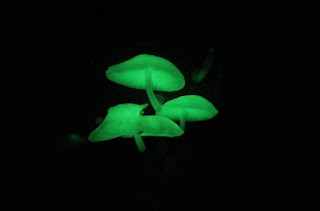I’ve hiked through these woodlands dozens of times but, until last weekend, never at night. Meeting up a little later than planned with Richard Foster (an old friend and full-time birding guide) and Dane Harris (an American who’s led dozens of people on middle-of-the-night nature rambles), we entered the forest near Xinhua National Forest Arboretum (新化國家植物園).
Within minutes of leaving our vehicle, we spotted in the canopy right above us a red giant flying squirrel (Petaurista petaurista, like the one pictured above). I was as surprised as I was delighted: I’ve glimpsed these creatures before, but never so close to a major urban area. From time to time, Dane also comes across Asian palm civets; we weren’t in luck. (Within a fortnight my luck changed for the better.)
Dane’s true passion is snakes, and he’s as willing to hold them as a Pentecostal pastor in Appalachia. But rather than put his trust in a deity, he practices safe-handling techniques. These are critical, as one of the four serpentine species we encountered was the extremely venomous many-banded krait (Bungarus multicinctus). Our tally for the evening also included a red-banded snake (Dinodon rufozonatum), three common mock vipers (Psammodynastes pulverulentus papenfussi; a subspecies endemic to Taiwan pictured below) and one greater green snake (Cyclophiops major, shown above).According to the excellent website Snakes of Taiwan: “the harmless, invertebrate-eating greater green snake is frequently mistaken for the Chinese tree viper [aka Stejneger's pit viper or Trimeresurus stejnegeri] and subsequently killed… [but] the differences are quite obvious at a closer glance: the Chinese tree viper has a triangular head, red eyes, a white stripe along both sides of the body, and a reddish-brown tail. The greater green snake has an oval head, black eyes, no stripes, and a green tail. Its scales are also much shinier than the matte, dull coloring of the Chinese tree viper.”
Dane glimpsed but was unable to detain and show us a Taiwan habu (Protobothrops mucrosquamatus), a highly venomous snake alternatively known as a brown spotted pitviper.
The understory near Xinhua is rich in insect life. We encountered dozens of grasshoppers representing at least seven species or subspecies, a single European mantis, lots of snails, a few slugs, large spiders and impressive centipedes. Dane pointed out a creature I’d never previously heard of: Thelyphonida, commonly known as a whip scorpion or vinegaroon (pictured below). These black arachnids are typically five or six cm long, including tail. The name “vinegaroon” comes from their ability to squirt out a mildly noxious, vinegar-like substance when threatened. They feed on millipedes, cockroaches and crickets, and when once you’ve learned to recognise them, you’ll see them all over the forest.
Glowing mushrooms were another highlight. Of the world’s 75 species of luminous fungi, nine - including one only identified in 2013 - grow in Taiwan.
Dane is happy to introduce Xinhua’s wildlife to visitors and expats based in other cities. These expeditions, which often last well into the early hours, are moderately strenuous. Good footwear is essential as you’ll likely go off-trail, especially if you hope to see bioluminescent mushrooms. You’ll also need your own transport to the trailhead, but Dane can lend powerful flashlights. He can be reached via daneharris@hotmail.com or through Facebook. The photos here are his; lots more can be found on his Facebook page.






Good idea! I used to go night hiking in the states. I did one night waterfall hike here in Taitung. It was just the right amount of adventure, and safety. We didn't go looking for snakes though.
ReplyDelete